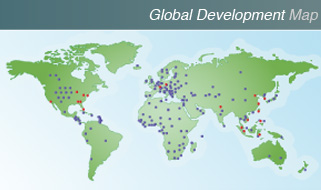-
Lazar Wolf: How is your brother-in-law? In America?
Tevye: Oh, he's doing very well.
Lazar Wolf: Oh, he wrote you?
Tevye: No, not lately.
Lazar Wolf: Then how do you know?
Tevye: If he was doing badly, he would write.
(Fiddler on the Roof)
Posted December 4, 2012
Sometimes, I think this may be the most misunderstood truth about clinical trials. In the interim period between treatment and the release of data, no news is (generally) good news. A recent article in Crain’s Detroit Business blared out the headline “ALS patient is living his second miracle.”
It is a wonderfully moving article recounting the remarkable recovery of one of our ALS patients. It is of course moving on a human scale; and important on several other levels. This is a “long term” trial. Technically the trial ends this February, six months after the last surgery. By then we will have patients (hopefully) between two and three years out from the surgery. This gives us the ability to assess the safety of the cells and the surgical technique over the “long term.” This is something the FDA requires because everything about our approach is novel; from our neural stem cells to the injections themselves directly into the grey matter of the spinal cord. While the “final” data remains to be collected of course, the interim data released to date shows compelling evidence that it is safe and well tolerated. There is also good evidence that in at least one cohort, the disease progression has been stopped, slowed down and/or reversed. Ted Harada, the subject of the news article is the only patient who has “gone public” with his data.
The article, and Ted’s journey have received a great deal of attention, as well they should. But there is another line in the article which I would like to address. In talking about the trial in general the reporter comments “some patients showed little or no improvement, others modest gains. Harada was off the charts.”
Many people I have spoken with have taken this to mean that “only” Ted has had a successful surgery(s). This is not true. ALS is a fatal, downward spiral for all patients. If we developed a therapy that could slow down or stop that downward spiral, we would be making a significant improvement in the life expectancy and quality of life of ALS patients. That Ted’s recovery suggests that we can actually reverse the symptoms is of course the ultimate goal. But we should not lose sight of how powerful a result would be if we could “merely” slow down or stop the degeneration.
It is human nature to focus on something as spectacular as Ted’s results (to date). But it is our job to keep our eye on the bigger picture. We can not comment on the other patient’s data. Our PI has presented interim data however, and was quoted as saying that we appeared to have slowed or stopped the progression of the disease in one cohort. THAT is the proper way to view the interim data; to simply pass it off as ‘little or no improvement” or “modest gains” over a long time period misses the point.
As I said, it’s easy to miss that point in the context of Ted’s having gone public; and we will not be able to comment on any of the other data until March. This will be after the final reports on all the patients are completed. But as Tevye reminds us; not hearing from us between now and then, means things are going well.






